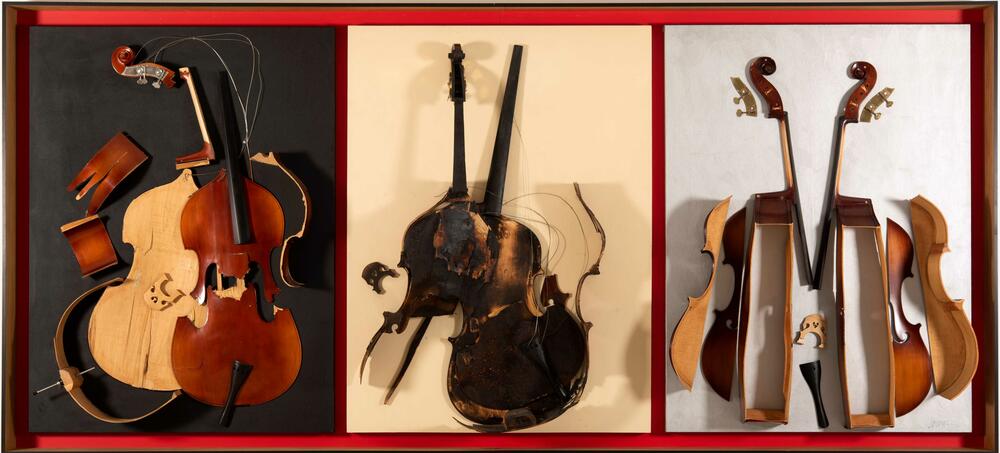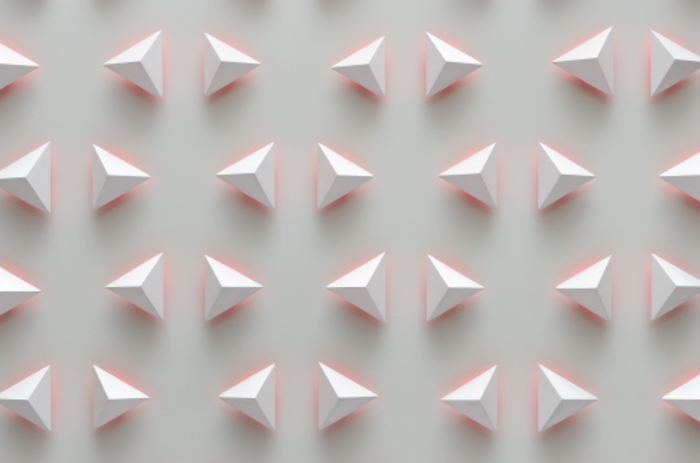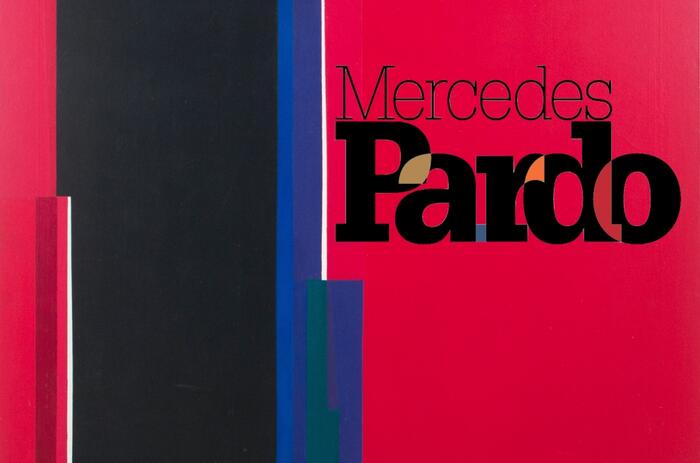ARMAN: THE CREATING FUROR OF THE NEW REALISM IN MIAMI
Arman. Conceptual Perception, the first solo exhibition in Miami by the legendary French-American artist co-founder of the “Nouveau Réalisme” (New Realism), is the result of an applause-worthy collusion between the Ascaso gallery and Corice Canton, widow and trustee of the Arman Marital Trust and its vast legacy.

Arman and Corice met in that Paris of 1968 that urged to be realistic by asking for the impossible and in the following decade they settled in New York, where, between 1977 and 1988, Warhol made four powerful portraits of each. The movement that revitalized the art scene favored “new ways of perceiving the real (urban)” and its manifestos, written by the notable critic Pierre Restany, were fervently signed by their founders in various group exhibitions: in addition to Arman, artists such as Daniel Spoerry, Jean Tinguely, Jacques Villeglé and Yves Klein participated, along with others, in a way of creation marked by fury, which incorporated real objects into the canvas.
The exhibition allows us to understand how they extended the legacy of the influential Dada and affected the development of Pop art, and the reason why, in the sixties, decades after New York had displaced Paris as the epicenter of avant-garde creation , the new royalists turned the eyes of the world to France. Arman and Klein, both born in this country in 1928, shared a fiery imagination, but starting from synchronous paths, they ended in opposite directions. At a certain point, Klein would plunge into a void - he exhibited an unoccupied suitcase in the Iris Clert gallery in 1960 - while Arman, the son of a Spanish-born furniture and antiques salesman, reached the peak of postmodern baroque: he stuffed with rubbish the gallery as an exaltation of his own accumulation of found objects.
In 1961, Arman performed the first of his "Angers": Colère, with a double bass exploded on a wooden panel. The sequel of works that resort to the destruction of a musical instrument comes from that piece of intense gestures and its ability to reconceptualize the memory of sound in a visual piece. In 1962, he created his iconic Chopin's Waterloo in a performance in which he destroyed a piano that he would rearrange over vast red wood-framed. Ascaso Gallery brought from Manhattan an extraordinary large-scale, untitled triptych, created in 2004, a year before his death. Rosemary O'Neill describes it this way: "Each panel comprises a single bass violin ordered by a sequence of artistic operations - breaking, burning and splitting - in a format that evokes the history of religious art in the West (...)". Each shattered double bass achieves a high visual, emotional, and tactile resonance: Arman rearranges the strings, the undone wood forms transform into powerful abstract expressions, but keeps the awareness of the previous destruction intact and unleashes an unexpected form of poignant beauty. Also because, as O'Neill points out, “due to its scale, the standing double bass is comparable to the human body”. At the same time, the dismemberment of the violin is connected to surrealist practices and that relationship between the musical instrument and the human body, preceded by one of Man Ray's most famous photographs: Ingres's Violin, 1924.
In the same room versions of the appropriations that Arman made of the Starry Night that Van Gogh painted the year before his death are displayed, evoking in part the view from the window of the sanatorium in which he had been confined, and impelled, as he wrote, by “a terrible need of — should I say the word? -religion. So I go out at night to paint the stars”. In his Van Gogh: Starry Night, 1994, Arman fragments and reproduces the work into eight irregular segments, altering all the colors except that of the crescent moon. He "paints" by accumulating acrylic and innumerable brushes that seem to stick to the canvas the moment they finish making a line. The photographs cannot reproduce the experience of seeing how, instead of Van Gogh's cobalt blue night, the accumulated brushes form before our eyes the cosmic energy of the spiral sky.
The second room reflects the exercise of what, in his manifesto of 1961, Arman entitled "the realism of accumulations" with various works from the series of bicycles that of course refer to Duchamp's Bicycle Wheel, 1913, but depart from the indifference with which he selected the objects: Arman, himself a cyclist - also an accomplished diver, fisherman and chess player - destroyed to create with passionate poetic precision. He transferred the energy of physical movement to these "reliefs in action" on canvas forged by the interplay between countless brushes and wheels, handlebars, fragments of sliced, broken, detached cycles. Yellowciped, 1991, with its dominant yellow and aquamarine and orange straps, conveys the lyricism of a summer.
The movement is provoked in various works such as La Boda de Nieve, 1991, by the repetition of the assembling of fragments of cycles in various successive positions that, as in the Nude Descending the Staircase, generates a vision connected to time. In Under the Volcano, 1992, he slices the bike and captures the excesses and genius of Malcom Lowry, leaving no room for white. Intense blues, greens and reds accumulated, maddening, seem to rotate on an earth-colored background, as if they alluded to the volcanoes that are the setting for Lowry's novel and his alcoholic delirium. In 1995 he created another work of the same series, untitled, with intense reds, violet and black, where it is possible to read that allusion that critics attributes to the way in which he approached mass production chains and the saturation of objects, resorting precisely to the incessant repetition. Couleurs Sourdes, 1996, with reds and blacks and dark greens, is a work with a centrifugal force, more connected to the “Angers” of the destructions and re-creations of his instruments. All of Arman's works predispose to immersion in an emotional atmosphere and make us listen again to Malevich's understanding that "nothing is real except feeling." What we see is proper artistic practice constantly being reborn from all appropriations and destructions. Arman literally pronounced with his life the phrase of Van Gogh: "As is my work, it is me." The opportunity to feel his work is a gift to the city.
Arman. Conceptual Perception
ASCASO GALLERY
On view until April, 18th
1325 NE First Ave, Miami, FL 33132




